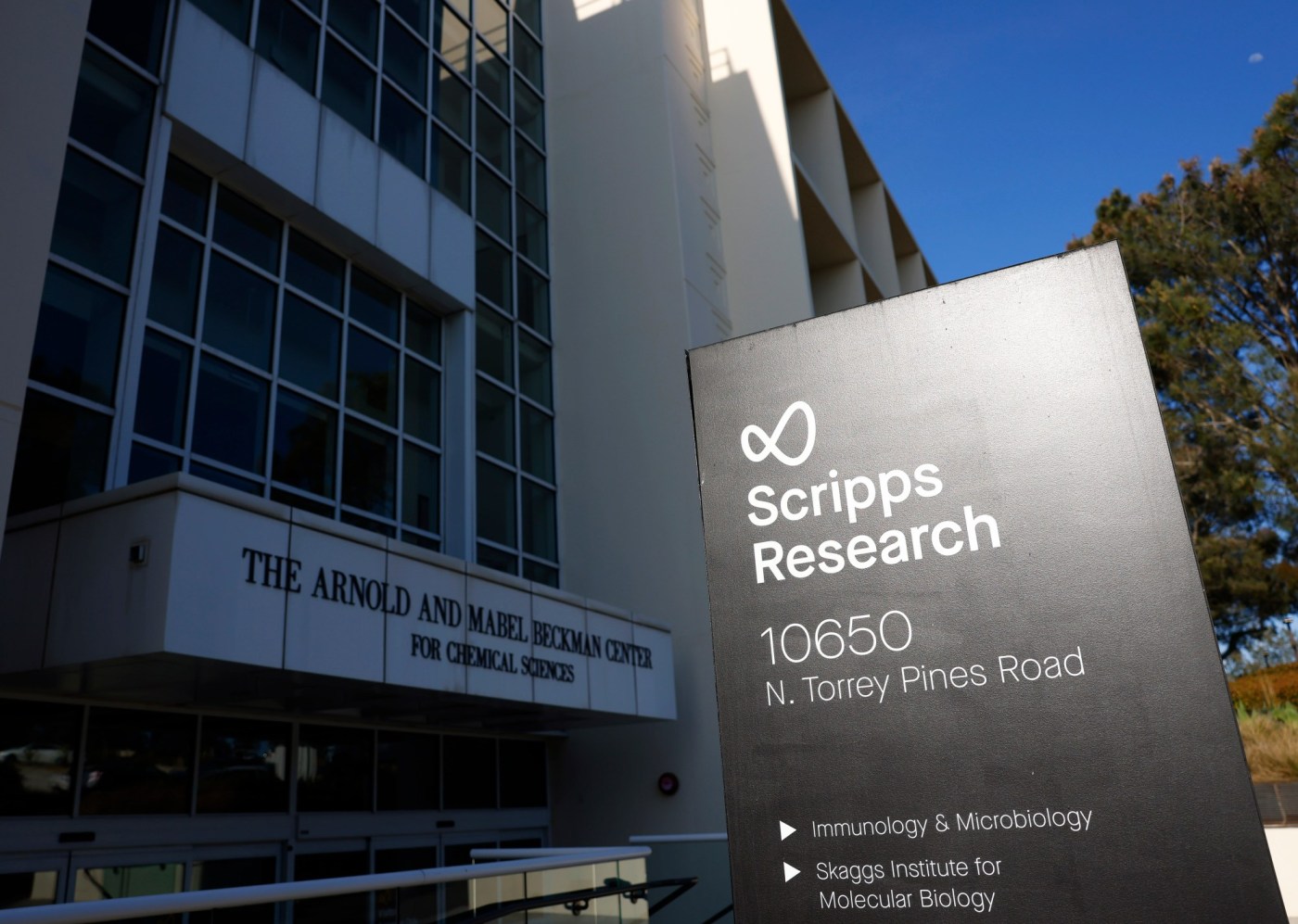A coalition of top scientists loaded its last set of wastewater samples for analysis Sunday after receiving the final word from San Diego County late last week that the work should cease due to a nationwide clawback of federal public health funds.
Since February 2021, the San Diego Epidemiology and Research for COVID Health program (SEARCH), a collaboration of UC San Diego, Scripps Research Institute and the genomics program at Rady Children’s Hospital, have used advanced science to analyze wastewater samples collected from three different treatment plants in San Diego County. Samples have been used to estimate both the amount and type of viruses shed by the region’s 3.3 million residents.
What started with coronavirus during the COVID-19 pandemic expanded to include MPOX in 2022 and research efforts are underway on using the same genetic analysis techniques to detect influenza, hepatitis and measles and other pathogens.
At UC San Diego campus on Friday, Dec. 3, 2021 in San Diego, CA., postdoctoral researcher, Smruthi Karthikeyan gathers a waste sample from one of the 131 auto samplers on campus that monitor 350 campus buildings. (Nelvin C. Cepeda / The San Diego Union-Tribune)
But those efforts ground to a halt Monday after researchers received word that the roughly $400,000 per year provided by the county’s public health department would cease, a casualty of an initiative from the Department of Government Efficiency’s cuts to a national “Epidemiology and Laboratory Capacity” program run by the U.S. Centers for Disease Control and Prevention. While other wastewater testing services will still be available, San Diego County’s effort provided more information on the types of viruses circulating in the community.
Related Articles
HHS, EPA to study fluoride in drinking water as RFK Jr. says he’ll tell CDC to stop recommending it
Less heart disease, more breast cancer: 5 takeaways from a new report on moderate drinking
As temperature records shattered, one Bay Area county saw huge increase in heat deaths last year
A second child with measles has died in Texas as the outbreak continues to spread
‘They won’t help me’: Sickest patients face insurance denials despite policy fixes
Dr. Louise Laurent, a perinatal research director at UC San Diego, and Kristian Andersen, director of infectious disease genomics at Scripps Research, said Monday that the funding pullback forces SEARCH to stop operating.
“We’re going to do one more batch, because we already purchased the reagents,” Laurent said, noting that the lab’s weekly delivery of new samples is now finished.
Laurent said that there was an expectation that funding would run out, as the county planned to add wastewater surveillance to its list of ongoing operations, including the special equipment necessary for the operation in its $93 million new public health laboratory in Kearny Mesa that is expected to open in May.
The researchers said that they anticipated a gradual transfer of knowledge from the research labs that have been running this highly technical service for years to those at the county who will be responsible for delivering accurate results going forward.
“The plan was that we would finish out this year’s contract at the end of August and then there would be an orderly transition where they were going to come back and learn our process from start to finish,” Laurent said.
She added that the key would have been to have both UCSD and the county lab processing the same wastewater samples on each organization’s equipment in parallel in order to make sure that results matched.
“Part of the issue is that this is disorderly,” Laurent said. “Finding out, you know, on a given day that your contract ended a week ago and that there is no transition time and that you are just expected to stop, that’s not the most efficient way to do this.”
The county agreed.
“In an ideal situation, the county lab would have started its in-house program while UCSD was still running in order to create an equivalence between the county data and UCSD’s,” an emailed statement said. “The lab can still stand up a fully functional program in-house without this, but it might be harder to compare data.”
Public health services, the county statement added, is “working on the logistics of transferring historical samples from UCSD to the new county lab.”
That’s not to say, Andersen added, that research agencies plan to just walk away from the county’s effort, though without grant funds, there are limits to what can be accomplished.
“We’re not angry with the county because we know that they don’t want to do this,” Andersen said. “Even without any funds we will continue to help as much as we can in terms of getting the county set up.
“But, to be clear, all of this is because of mandates that come right from the federal government, and specifically those cutting all the funding, not the county itself.”
Asked about the situation, the county said in a statement that the existing wastewater testing contract “was paused in light of the federal cuts.”
“The county continues to anticipate moving that testing, and related investigation procedures, to the new lab,” the statement said. “In addition, Wastewater SCAN and CDPH (California Department of Public Health) both provide local testing. Public Health Services is grateful for the services UC San Diego and Scripps have provided for this contract and looks forward to continuing a close relationship going forward.”
The county referenced Wastewater SCAN, a nationwide wastewater analysis project jointly run with philanthropic funds by Stanford University and Emory University in Atlanta. The project lists no indications that it too will shut down. And the California Department of Public Health also regularly publishes wastewater readings for coronavirus.
What’s different about San Diego’s SEARCH project is the level of detail made available to the community. Other projects provide regular updates on the total amount of viral genetic material found in wastewater samples, a critical factor in early detection of new outbreaks building in the community. Spikes in the overall number of viruses detected generally correlate with the arrival of a new variant capable of spreading rapidly and quickly causing many new infections. SEARCH goes one step further, using genetic sequencing to determine which subtypes of the virus are causing increases in overall activity.
“This is critical to understand because not all variants behave the same, and we need to know which ones are circulating in order to select new variants for future vaccines and, importantly, now which variants could evade the monoclonal antibodies used for treatments and prophylaxis of those who can’t take the vaccine or can’t generate their own immunity,” Andersen said.





